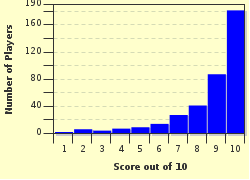Quiz Answer Key and Fun Facts
1. This station was the first to be opened (on 10th January 1863). Its entrance is on a street by the same name, and the most famous address on that street is 221b, even though it doesn't exist! It is close to Regent's Park and Marylebone. Which station is it?
2. The next station is on the Piccadilly Line. Its name is actually a corruption - the site near where it sits was once a walled garden belonging to the monks of Westminster Abbey. The surrounding area is now the site of a thriving market, though it's not really a garden market anymore. If one were to catch a train from this station to the nearest station, it would be the most expensive journey in the world. The station is said to be haunted. Which station is it?
3. This station is named after a pub, though some people insist that the name is a corruption of Eleanor of Castile. The first baby to be born on the Tube was born in this station. It is on the Bakerloo and Northern Lines in South London. Which station is it?
4. This station was named for a famous battle which took place in 1815, in which Wellington finally overthrew Napoleon. The shortest Tube line runs from this station to Bank, but other lines to this station are the Jubilee Line and Northern Line. Which station is it?
5. The next station was named after the Knights Templar, as it is located very near to where they had their quarters. It is in the heart of legal London, being located near two of the Inns of Court. Its namesake also formed part of Dan Brown's "The da Vinci Code". Where is it?
6. This station on the Central and Piccadilly Lines takes its name from part of the River Fleet, although its original name was extended to include the name Kingsway. Part of the station has also been called British Museum. It has now been renamed according to the name of the area which has been so-called since at least 951. The name itself means the stream in the hollow. Which station is it?
7. This station is in the centre of London, and post-codes are designated by direction from this spot. It is the station at which one would alight for Trafalgar Square, St Martin's in the Fields, the National Gallery or the National Portrait Gallery. The station itself has old pictures painted on the walls, depicting a long journey. A famous film was once made about a road bearing the same name as this station. Which is it?
8. This station is in an area which has hardly changed its name since 1294! There are actually two stations here - one which serves the Hammersmith & City Line, and another which serves the Piccadilly and District Lines. The name possibly refers to a mediaeval trade. A well-known venue near the station is the Apollo. Which station is it?
9. You'd have to be mad to go to this station! It's on the District Line, near the eastern end of the line. The name - although it sounds like a dog's sound - actually rather boringly means the home of the Bercias. Which station is it?
10. The final station sounds very like the surname of Heather Graham's character in "Austin Powers: The Spy Who Shagged Me". It is found on the East London Line as well as the Docklands Light Railway. The name actually means shallow well. Which station is it?
Source: Author
VerticalDancer
This quiz was reviewed by FunTrivia editor
stedman before going online.
Any errors found in FunTrivia content are routinely corrected through our feedback system.


